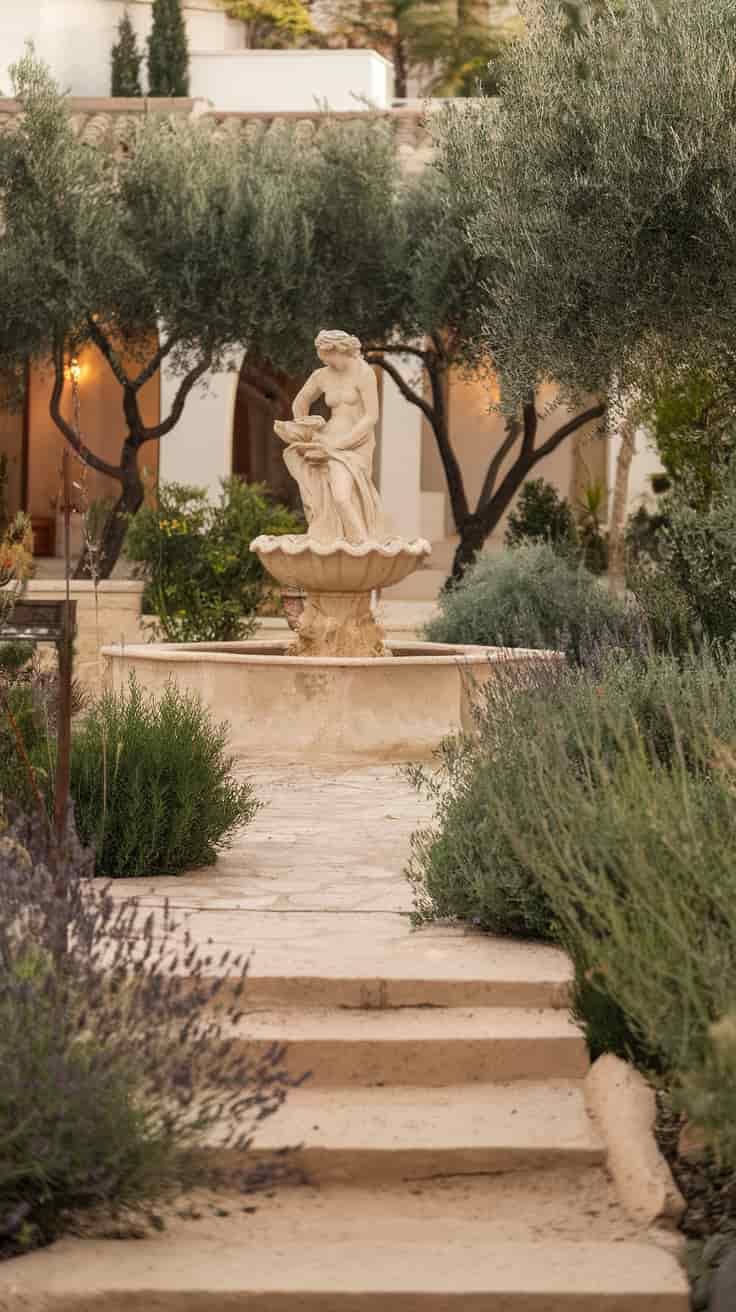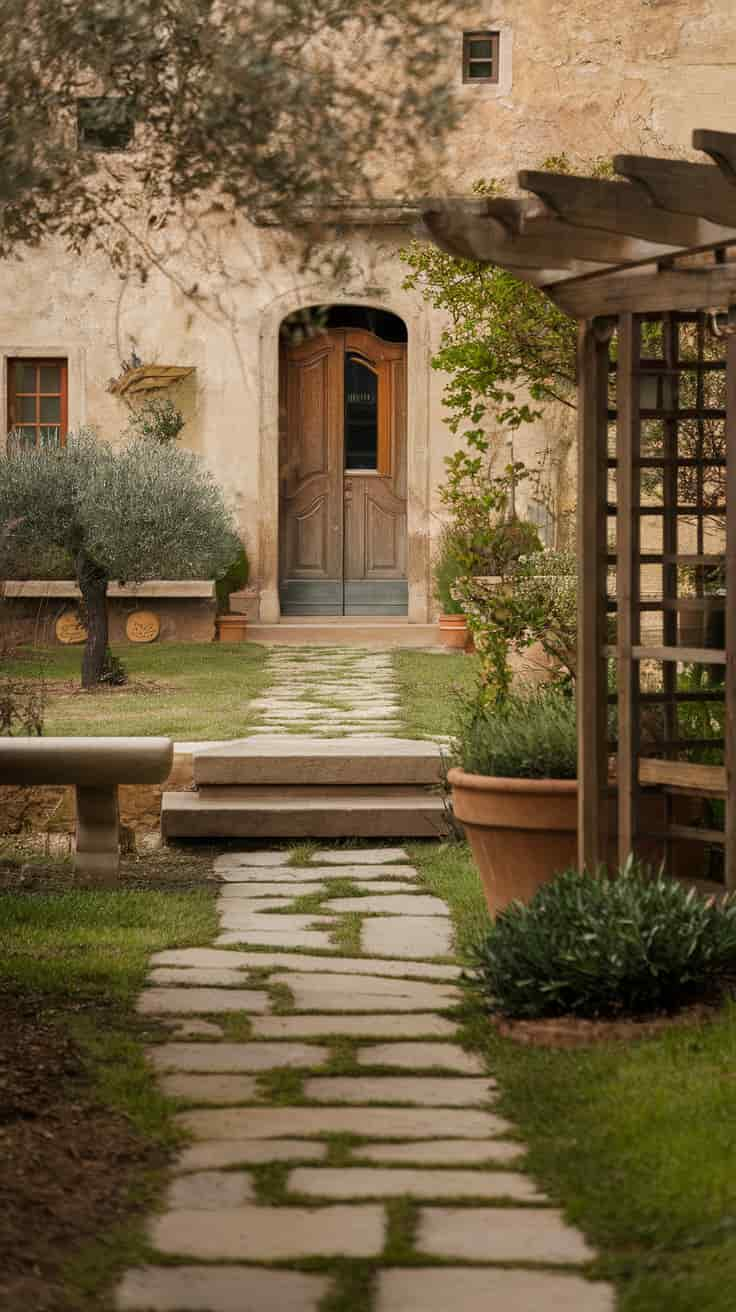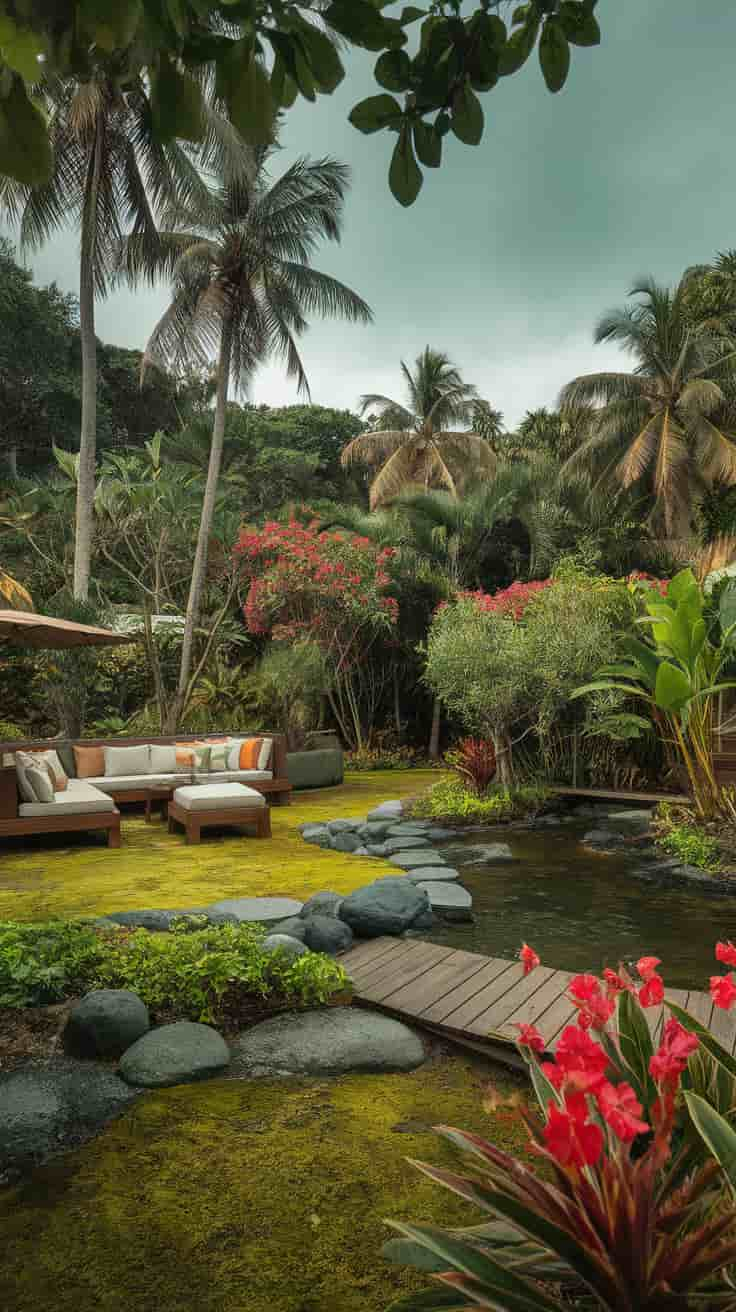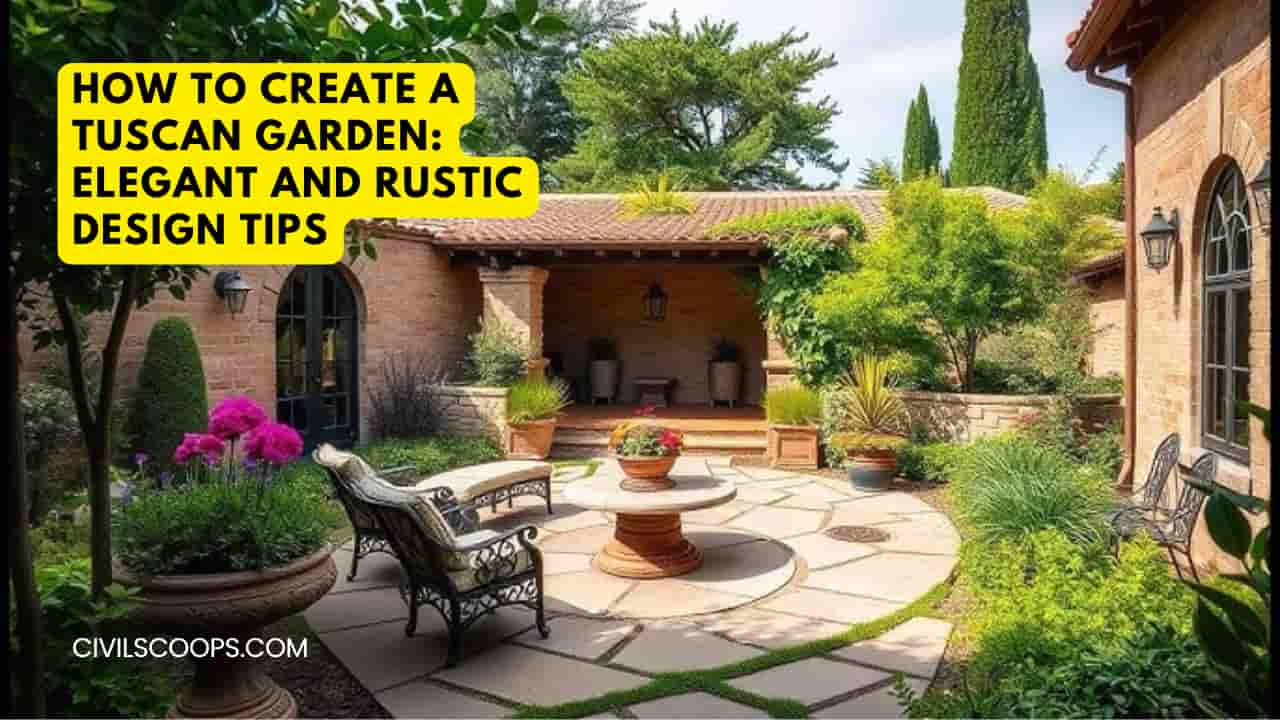How to Create a Tuscan Garden: Elegant and Rustic Design Tips
Gardens have long been a place of beauty, tranquility, and connection to nature. In particular, Mediterranean gardens and exotic garden styles, like Tuscan gardens and tropical gardens landscapes, offer a fusion of vibrant colors, lush greenery, and a sense of serenity.
This article explores the characteristics, plants, and design ideas of these enchanting garden styles, providing you with inspiration to create your own Mediterranean or exotic paradise.
Table of Contents
Mediterranean Garden: Timeless Elegance

A Mediterranean garden draws its inspiration from the coastal regions of Southern Europe, particularly Greece, Italy, and Spain.
The design focuses on simplicity, drought-tolerant plants, and natural materials that blend seamlessly with the environment.
Key Features of a Mediterranean Garden
- Natural Stone Elements: Stone pathways, terraces, and garden walls are prominent features in Mediterranean gardens. They give the garden an earthy, timeless look.
- Drought-Resistant Plants: Since Mediterranean climates are hot and dry, plants that thrive in such conditions, like lavender, rosemary, and olive trees, are popular choices.
- Terracotta and Earthy Hues: Mediterranean gardens often use warm, earthy colors to complement the landscape. Terracotta pots and clay tiles enhance the rustic charm of the space.
- Outdoor Living Spaces: Mediterranean gardens are designed for outdoor living. Incorporating seating areas, pergolas, or outdoor dining spaces can make the garden a true extension of the home.
Plants for Mediterranean Gardens
One of the reasons Mediterranean gardens are loved is because they require minimal water and are easy to maintain. Key plants include:
- Lavender: Known for its fragrant purple blooms and ability to withstand dry conditions.
- Olive Trees: Symbolic of the Mediterranean, olive trees bring a sense of history and beauty to the garden.
- Cypress Trees: These tall, slender trees add vertical interest and a touch of formality to Mediterranean designs.
- Herbs: Rosemary, thyme, and oregano not only thrive in Mediterranean climates but also provide fresh flavors for cooking.
Tuscan Garden: A Slice of Italy

The Tuscan garden, a sub-style of Mediterranean gardens, is inspired by the rolling hills of Tuscany, Italy.
Known for its romantic charm, structured designs, and use of iconic plants like cypress and grapevines, Tuscan gardens evoke a feeling of timeless beauty.
Key Features of a Tuscan Garden
- Symmetry and Structure: Tuscan gardens often have a formal structure with well-defined pathways, raised beds, and geometrically arranged plants.
- Vine-Covered Trellises: Incorporating grapevines or climbing roses on trellises brings a classic Tuscan touch to the garden.
- Rustic Materials: Tuscan gardens use natural materials such as stone and brick. Weathered wood and wrought iron furniture add to the rustic, yet elegant, ambiance.
- Water Features: Fountains or small ponds are often included to bring a sense of tranquility and coolness to the space.
Plants for Tuscan Gardens
Tuscan gardens focus on both beauty and practicality. Some key plant choices include:
- Italian Cypress: These tall, slender trees provide a sense of height and drama, often planted in rows to create striking vistas.
- Grapevines: Essential to a Tuscan landscape, grapevines can be grown for ornamental purposes or to produce fruit.
- Lavender and Rosemary: These Mediterranean staples are perfect for lining pathways and adding fragrance.
- Fruit Trees: Fig, lemon, and pomegranate trees thrive in Tuscan gardens, adding both visual appeal and edible fruit.
Tropical Gardens Landscape: Lush and Exotic

For those seeking a more exotic flair, a tropical gardens landscape offers a vibrant, lush design filled with dramatic foliage, colorful flowers, and a sense of lush abundance.
While Mediterranean gardens are subtle and restrained, tropical gardens are bold and exuberant.
Key Features of Tropical Gardens
- Lush Foliage: Large, glossy leaves are a signature of tropical gardens. Plants like banana trees, ferns, and elephant ears create a sense of dense, vibrant greenery.
- Bright Flowers: Tropical gardens are filled with colorful blooms, including hibiscus, bird of paradise, and orchids.
- Water Features: Whether it’s a pond, a waterfall, or a small fountain, water is a key element in tropical landscapes. It helps cool the environment and adds to the exotic atmosphere.
- Varied Textures: Tropical gardens use a variety of textures, from the softness of ferns to the boldness of large-leaved plants like taro and heliconia.
Plants for Tropical Gardens
Tropical gardens thrive in warm, humid climates, but many plants can also be grown in containers in cooler areas. Some must-have tropical plants include:
- Bird of Paradise: With its bright, bird-like flowers, this plant brings a burst of color to any tropical landscape.
- Banana Trees: The broad, architectural leaves of banana trees are iconic in tropical gardens, creating a lush, jungle-like effect.
- Hibiscus: Known for its large, vibrant flowers, hibiscus adds a pop of color and a tropical feel to the garden.
- Palm Trees: These are a staple of tropical landscapes, providing height and a relaxed, beachy vibe.
Combining Mediterranean and Tropical Elements
While Mediterranean and tropical gardens are distinct in their themes and plant choices, they share a focus on outdoor living and creating a sense of escape.
If you’re drawn to both styles, it’s possible to combine elements from each to create a unique garden that suits your climate and taste.
For instance, you could pair Mediterranean plants like lavender and rosemary with lush tropical foliage like ferns or banana plants to create a garden that feels both warm and verdant.
A stone pathway flanked by palm trees and terracotta pots filled with tropical flowers can add both structure and vibrancy.
Designing Your Mediterranean or Exotic Garden
When designing your own Mediterranean or exotic garden, consider the following tips:
- Climate: Mediterranean gardens work best in hot, dry climates, while tropical gardens require warmth and humidity. Choose plants that are well-suited to your local environment to ensure they thrive.
- Outdoor Living: Both garden styles encourage outdoor living. Include seating areas, pergolas, or patios where you can relax and enjoy your surroundings.
- Water Management: Mediterranean gardens often incorporate drought-resistant plants, while tropical gardens may require more water. Plan your irrigation system accordingly to keep your garden healthy.
- Color Palette: Mediterranean gardens tend to favor soft, muted tones like lavender, olive green, and terracotta, while tropical gardens embrace bold, vibrant colors. Choose a palette that resonates with your personal style.
Like this post? Share it with your friends!
Suggested Read –
- Best Plant Room Ideas for Indoor Gardening
- How to Care for Snake Plants: The Easiest Indoor Plant
- Creating a Cozy Thanksgiving Aesthetic for Your Home
- How to Create a Spiritual Garden for Meditation and Reflection
- Fresh Flower Arrangements: Brighten Your Home with Lively Blooms
Conclusion
Whether you’re drawn to the rustic charm of a Mediterranean garden, the timeless elegance of a Tuscan garden, or the lush vibrancy of a tropical gardens landscape, each offers a unique way to bring beauty and tranquility to your outdoor space.
By carefully selecting plants and design elements that reflect these styles, you can create a garden that transports you to another world—a serene retreat right in your own backyard.
Originally posted 2024-10-17 06:52:44.

